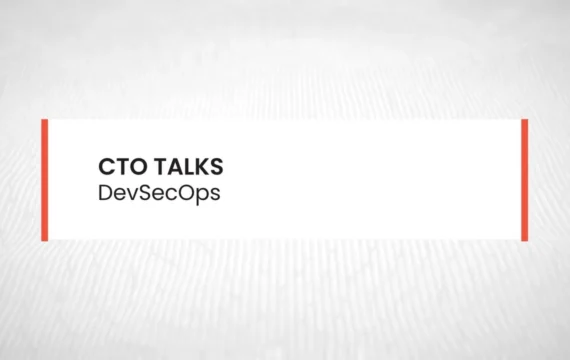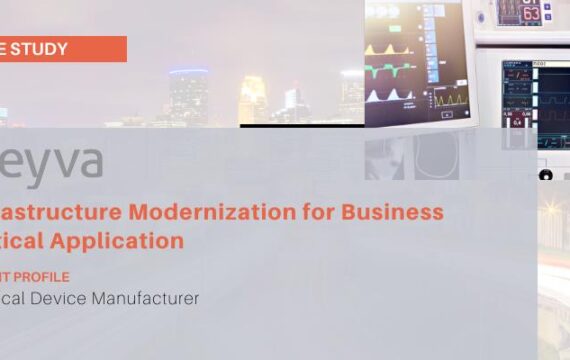Get Appointment
- contact@wellinor.com
- +(123)-456-7890
Blog & Insights
- Home
- Blog & Insights
Keyva Chief Technology Officer Anuj Tuli discusses how DevSecOps allows security to be innately tied to the development and operational work being done by IT teams.
[post_title] => CTO Talks: DevSecOps - Security in a Digital Era is a Top Concern [post_excerpt] => [post_status] => publish [comment_status] => closed [ping_status] => closed [post_password] => [post_name] => cto-talks-devsecops-security-in-a-digital-era-is-a-top-concern [to_ping] => [pinged] => [post_modified] => 2024-05-15 19:41:48 [post_modified_gmt] => 2024-05-15 19:41:48 [post_content_filtered] => [post_parent] => 0 [guid] => https://keyvatech.com/?p=3782 [menu_order] => 0 [post_type] => post [post_mime_type] => [comment_count] => 0 [filter] => raw ) [1] => WP_Post Object ( [ID] => 3830 [post_author] => 16 [post_date] => 2023-04-21 17:03:12 [post_date_gmt] => 2023-04-21 17:03:12 [post_content] =>This article reviews the process to set up a Kubernetes cluster using docker container runtime with 1 master node and 1 worker node on VMware based RHEL 8 instances.
All the commands listed will be ran against both the master and worker node.
Let’s start by enabling the RedHat repos.
#Setup RHEL subscription
subscription-manager register
subscription-manager refresh
#Install commonly used repos
subscription-manager repos --enable rhel-8-for-x86_64-baseos-rpms
subscription-manager repos --enable rhel-8-for-x86_64-appstream-rpms
Update the Yum repositories.
yum update -y
install yum-utils
Since this is a lab environment, we will be disabling firewalls. If it is a production environment, you can open specific ports for communication of your applications, and for Kubernetes components instead of disabling the firewall completely. (For a list of the required ports see: https://kubernetes.io/docs/reference/networking/ports-and-protocols/)
#Disable firewall
systemctl disable firewalld
systemctl stop firewalld
Swap disabled. You MUST disable swap in order for the Kubelet to work properly.
swapoff –a
#Comment out the swap line
etc/fstab
#/dev/mapper/rhel-swap swap swap defaults 0 0
Install Docker and Dockerd Container runtime.
#Installing Docker
sudo dnf config-manager --add-repo=https://download.docker.com/linux/centos/docker-ce.repo
dnf repolist -v
sudo yum install docker-ce docker-ce-cli containerd.io docker-compose-plugin -y
systemctl enable docker
systemctl start docker
###Install docker Docker Container Runtime
git clone https://github.com/Mirantis/cri-dockerd.git
# Run these commands as root
###Install GO###
wget https://storage.googleapis.com/golang/getgo/installer_linux
chmod +x ./installer_linux
./installer_linux
source ~/.bash_profile
cd cri-dockerd
mkdir bin
go build -o bin/cri-dockerd
mkdir -p /usr/local/bin
install -o root -g root -m 0755 bin/cri-dockerd /usr/local/bin/cri-dockerd
cp -a packaging/systemd/* /etc/systemd/system
sed -i -e 's,/usr/bin/cri-dockerd,/usr/local/bin/cri-dockerd,' /etc/systemd/system/cri-docker.service
systemctl daemon-reload
systemctl enable cri-docker.service
systemctl enable --now cri-docker.socket
Installing Kubeadm, Kubelet and Kubectl.
cat <<EOF | sudo tee /etc/yum.repos.d/kubernetes.repo
[kubernetes]
name=Kubernetes
baseurl=https://packages.cloud.google.com/yum/repos/kubernetes-el7-\$basearch
enabled=1
gpgcheck=1
gpgkey=https://packages.cloud.google.com/yum/doc/rpm-package-key.gpg
exclude=kubelet kubeadm kubectl
EOF
# Set SELinux in permissive mode (effectively disabling it)
sudo setenforce 0
sudo sed -i 's/^SELINUX=enforcing$/SELINUX=permissive/' /etc/selinux/config
sudo yum install -y kubelet kubeadm kubectl --disableexcludes=kubernetes
sudo systemctl enable --now kubelet
Forwarding IPv4 and letting iptables see bridged traffic.
overlay
br_netfilter
EOF
sudo modprobe overlay
sudo modprobe br_netfilter
# sysctl params required by setup, params persist across reboots
cat <<EOF | sudo tee /etc/sysctl.d/k8s.conf
net.bridge.bridge-nf-call-iptables = 1
net.bridge.bridge-nf-call-ip6tables = 1
net.ipv4.ip_forward = 1
EOF
# Apply sysctl params without reboot
sudo sysctl --system
ON MASTER NODE ONLY
Deploy the cluster via Kubeadm then deploy the Flannel networking component.
#Deploy the Kubernetes cluster specifying the cluster network cidr and the container runtime
kubeadm init --pod-network-cidr=10.244.0.0/16 --cri-socket /run/cri-dockerd.sock
#After deploying the cluster you will receive a join command which you will save to run on the worker node.
kubeadm join masternode.bpic.local:6443 --token cll0gw.50jagb64e80uw0da \
--discovery-token-ca-cert-hash sha256:4d699e7f06ce0e7e80b78eadc47453e465358021aee52d956dceed1dfbc0ee34
###On Master Nodes only w/ non root user
mkdir -p $HOME/.kube
sudo cp -i /etc/kubernetes/admin.conf $HOME/.kube/config
sudo chown $(id -u):$(id -g) $HOME/.kube/config
export KUBECONFIG=~/.kube/config
Deploy Flannel as the non-root user
kubectl apply -f https://github.com/flannel-io/flannel/releases/latest/download/kube-flannel.yml
ON WORKER NODE ONLY
Run the join command to add the node to the cluster.
#Join the node to the cluster
kubeadm join masternode.bpic.local:6443 --token cll0gw.50jagb64e80uw0da \
--discovery-token-ca-cert-hash sha256:4d699e7f06ce0e7e80b78eadc47453e465358021aee52d956dceed1dfbc0ee34
After joining the worker node to the cluster run the following on the master node to confirm cluster status.
kubectl get nodes -o wide
#The result should look similar to the following
NAME STATUS ROLES AGE VERSION INTERNAL-IP OS-IMAGE CONTAINER-RUNTIME
master Ready control-plane 2d5h v1.25.0 192.168.16.73 Red Hat Enterprise Linux 8.7 docker://23.0.4
worker1 Ready <none> 2d1h v1.25.0 192.168.16.153 Red Hat Enterprise Linux 8.7 docker://23.0.4
About the Author
[table id =6 /]
[post_title] => How to set up a Kubernetes cluster with Dockerd container runtime on Red Hat Enterprise Linux 8 [post_excerpt] => [post_status] => publish [comment_status] => closed [ping_status] => closed [post_password] => [post_name] => how-to-set-up-a-kubernetes-cluster-with-dockerd-container-runtime-on-red-hat-enterprise-linux-8 [to_ping] => [pinged] => [post_modified] => 2023-05-15 15:11:18 [post_modified_gmt] => 2023-05-15 15:11:18 [post_content_filtered] => [post_parent] => 0 [guid] => https://keyvatech.com/?p=3830 [menu_order] => 0 [post_type] => post [post_mime_type] => [comment_count] => 0 [filter] => raw ) [2] => WP_Post Object ( [ID] => 3827 [post_author] => 7 [post_date] => 2023-04-18 14:46:53 [post_date_gmt] => 2023-04-18 14:46:53 [post_content] => [post_title] => Case Study: IT Modernized [post_excerpt] => [post_status] => publish [comment_status] => closed [ping_status] => closed [post_password] => [post_name] => case-study-it-modernized [to_ping] => [pinged] => [post_modified] => 2025-03-17 19:47:00 [post_modified_gmt] => 2025-03-17 19:47:00 [post_content_filtered] => [post_parent] => 0 [guid] => https://keyvatech.com/?p=3827 [menu_order] => 0 [post_type] => post [post_mime_type] => [comment_count] => 0 [filter] => raw ) [3] => WP_Post Object ( [ID] => 3824 [post_author] => 7 [post_date] => 2023-04-18 14:45:32 [post_date_gmt] => 2023-04-18 14:45:32 [post_content] => [post_title] => Case Study: Infrastructure Modernized for Business Critical Application [post_excerpt] => [post_status] => publish [comment_status] => closed [ping_status] => closed [post_password] => [post_name] => case-study-infrastructure-modernized-for-business-critical-application [to_ping] => [pinged] => [post_modified] => 2024-05-15 20:13:12 [post_modified_gmt] => 2024-05-15 20:13:12 [post_content_filtered] => [post_parent] => 0 [guid] => https://keyvatech.com/?p=3824 [menu_order] => 0 [post_type] => post [post_mime_type] => [comment_count] => 0 [filter] => raw ) [4] => WP_Post Object ( [ID] => 3814 [post_author] => 7 [post_date] => 2023-04-18 14:34:57 [post_date_gmt] => 2023-04-18 14:34:57 [post_content] => [post_title] => Case Study: Cloud Infrastructure Consolidation [post_excerpt] => [post_status] => publish [comment_status] => closed [ping_status] => closed [post_password] => [post_name] => cloud-infrastructure-consolidation [to_ping] => [pinged] => [post_modified] => 2024-05-15 20:14:07 [post_modified_gmt] => 2024-05-15 20:14:07 [post_content_filtered] => [post_parent] => 0 [guid] => https://keyvatech.com/?p=3814 [menu_order] => 0 [post_type] => post [post_mime_type] => [comment_count] => 0 [filter] => raw ) [5] => WP_Post Object ( [ID] => 3779 [post_author] => 7 [post_date] => 2023-04-06 08:30:00 [post_date_gmt] => 2023-04-06 08:30:00 [post_content] =>Keyva Chief Technology Officer Anuj Tuli celebrates the organization's 5th Anniversary and discusses lessons learned over the last five years.
[post_title] => CTO Talks: Keyva 5th Anniversary - Lessons Learned [post_excerpt] => [post_status] => publish [comment_status] => closed [ping_status] => closed [post_password] => [post_name] => cto-talks-keyva-5th-anniversary-lessons-learned [to_ping] => [pinged] => [post_modified] => 2024-05-15 20:19:44 [post_modified_gmt] => 2024-05-15 20:19:44 [post_content_filtered] => [post_parent] => 0 [guid] => https://keyvatech.com/?p=3779 [menu_order] => 0 [post_type] => post [post_mime_type] => [comment_count] => 0 [filter] => raw ) [6] => WP_Post Object ( [ID] => 3753 [post_author] => 14 [post_date] => 2023-03-16 13:44:01 [post_date_gmt] => 2023-03-16 13:44:01 [post_content] =>By: Saikrishna Madupu – Sr Devops Engineer
This blog describes how to incorporate an extensive quantity of current AWS infrastructure into Terraform. This process is relevant to an organization that manually constructed its AWS infrastructure and wants to implement it in Terraform code for improved automation and cost savings. This is a substantial undertaking with a number of benefits.
- First, a brief description of TerraCognita. TerraCognita is a tool that helps import existing infrastructure from AWS, Google Private Cloud, AzureRM and VMware vSphere cloud providers as Terraform (v1.1.9) resource/state.1
I discovered through study that Terraform import only permits the import of a single resource at a time. You will need to import resources into one account at a time if you wish to build up your organization in the cloud at this time because there is no possibility to import resources into several accounts at the same time.
Adding TerraCognita will allow you to import a rather large file including a variety of variables. Using a flag, you have the ability to import only particular variables into a program. You can leverage the same strategy to restrict the variables that are generated by the variable.tf file.
Installation:
Go Libraries:
You can build and install with the latest sources. It uses Go Modules, so GO 1.17+ is required.
- git clone https://github.com/cycloidio/terracognita
- cd terracognita
- make install
Linux:
curl -L https://github.com/cycloidio/terracognita/releases/latest/download/terracognita-linux-amd64.tar.gz -o terracognita-linux-amd64.tar.gz
tar -xf terracognita-linux-amd64.tar.gz
chmod u+x terracognita-linux-amd64
sudo mv terracognita-linux-amd64 /usr/local/bin/terracognita MacOs:
brew install terracognita
Prerequisites:
- Cloud account
- CLI installed and configured regardless of the cloud you use
- Terraform
Use Cases:
Sample CLI command to import all s3 buckets for AWS:
- Importing the s3 bucket which was created manually and manage it using Terraform IAC to handle its configuration using TerraCongita:
terracognita aws --hcl s3 --tfstate terraform.tfstate --aws-default-region us-east-1 -i aws_s3_bucket Returns Output:
terracognita-s3 % terracognita aws --hcl s3 --tfstate terraform.tfstate --aws-default-region us-east-1 -i aws_s3_bucket
We are about to remove all content from "s3", are you sure? Yes/No (Y/N):
y
Starting Terracognita with version v0.8.1
Importing with filters:
Tags: [],
Include: [aws_s3_bucket],
Exclude: [],
Targets: [],
Importing aws_s3_bucket [6/6] Done!
Writing HCL Done!
Writing TFState Done!
saikrishnamadupu@Administrators-MacBook-Pro terracognita-s3 % ls -ltr
total 32
-rw-r--r-- 1 saikrishnamadupu staff 13164 Feb 12 00:07 terraform.tfstate
drwx------ 4 saikrishnamadupu staff 128 Feb 12 00:07 s3 It returns all the buckets info into the folder called s3 where it contains s3_storage.tf file that contains all the buckets list and its configuration.
Post-import manual work:
- TerraCognita does not make a versions.tf file on its own, you will need to copy the information from the module file, where it is automatically generated, and paste it into a versions.tf file on your own if one is needed.
- TerraCognita does not produce any outputs.tf files of its own. You are responsible for creating them if they are necessary.
Supported providers:
- Aws: v4.9.0
- AzureRM: v3.6.0
- Google: v4.9.0
- vSphere: v2.2.0
Ref: Terracognita
About the Author
[table id =5 /]
[post_title] => TerrCognita Infrastructure as Code (IaC) Automation [post_excerpt] => [post_status] => publish [comment_status] => closed [ping_status] => closed [post_password] => [post_name] => terrcognita-infrastructure-as-code-iac-automation [to_ping] => [pinged] => [post_modified] => 2023-04-21 17:03:44 [post_modified_gmt] => 2023-04-21 17:03:44 [post_content_filtered] => [post_parent] => 0 [guid] => https://keyvatech.com/?p=3753 [menu_order] => 0 [post_type] => post [post_mime_type] => [comment_count] => 0 [filter] => raw ) [7] => WP_Post Object ( [ID] => 3751 [post_author] => 14 [post_date] => 2023-03-09 14:50:56 [post_date_gmt] => 2023-03-09 14:50:56 [post_content] =>By: Saikrishna Madupu – Sr Devops Engineer
This article reviews how to tail logs from multiple pods via Kubernetes and Stern.
Kubernetes (K8) is a scalable container orchestrator. It is fairly lightweight to support IoT appliances and it can also handle huge business systems with hundreds of apps and hosts .
Stern is a tool for the tailing of numerous Kubernetes pods and the numerous containers that make up each pod. To facilitate faster debugging, each result is color coded.
As the query is a regular expression, the pod name can be easily filtered, and the exact id is not required. For instance, for instance omitting the deployment id. When a pod is deleted, it is removed from the tail, and when a new pod is added, it is automatically tailed.
Stern can tail all of the containers in a pod instead of having to do each one manually. You can simply specify the container flag to limit the number of containers displayed. By default, all containers are monitored.
Deploying a nginx svc:
kind: Service
apiVersion: v1
metadata:
name: nginx
labels:
app: nginx
spec:
selector:
app: nginx
ports:
- port: 80
protocol: TCP
targetPort: 80
type: ClusterIP
---
apiVersion: apps/v1
kind: Deployment
metadata:
name: nginx
labels:
app: nginx
spec:
replicas: 3
selector:
matchLabels:
app: nginx
template:
metadata:
labels:
app: nginx
spec:
containers:
- name: nginx
image: nginx:latest
imagePullPolicy: Always
ports:
- containerPort: 80
protocol: TCP%
kubectl apply --filename nginx-svc.yaml -n keyva
O/p: service/nginx unchanged
deployment.apps/nginx created
we can validate and verify the svc and pods that being up and running:
kubectl get all -n keyva
NAME READY STATUS RESTARTS AGE
pod/nginx-cd55c47f5-gwtkn 1/1 Running 0 12s
NAME TYPE CLUSTER-IP EXTERNAL-IP PORT(S) AGE
service/nginx ClusterIP 10.96.58.31 <none> 80/TCP 88d
NAME READY UP-TO-DATE AVAILABLE AGE
deployment.apps/nginx 1/1 1 1 12s
NAME DESIRED CURRENT READY AGE
replicaset.apps/nginx-cd55c47f5 1 1 1 12s
kubectl get pods
NAME READY STATUS RESTARTS AGE
nginx-cd55c47f5-gwtkn 1/1 Running 0 30s
KubeCtl has limits:
Using the label selection, it is evident that kubectl can read logs from numerous pods, however this technique has a drawback.
- First, the logs from several pods are jumbled together, making it impossible to determine which log line originated from which pod.
- Second, tail mode (using –follow (-f)) is not supported.
The reason for this is that –follow streams the API server's logs. You open a connection to the API server per pod, which opens a connection to the associated kubelet to stream logs continually. This does not scale well and results in many incoming and outgoing connections to the API server. As a result, it became a design decision to restrict the number of concurrent connections. Using Stern:
The command is fairly straightforward. Stern retrieves the logs from the given namespace for the specified application. In the case of Stern, you can view not only logs from a single Kubernetes object, such as a deployment or service, but also logs from all related objects. Example:
Stern -n keyva nginx
stern -n keyva nginx
+ nginx-cd55c47f5-86ql5 › nginx
+ nginx-cd55c47f5-bm55t › nginx
+ nginx-cd55c47f5-gwtkn › nginx
nginx-cd55c47f5-gwtkn nginx /docker-entrypoint.sh: /docker-entrypoint.d/ is not empty, will attempt to perform configuration
nginx-cd55c47f5-gwtkn nginx /docker-entrypoint.sh: Looking for shell scripts in /docker-entrypoint.d/
nginx-cd55c47f5-gwtkn nginx /docker-entrypoint.sh: Launching /docker-entrypoint.d/10-listen-on-ipv6-by-default.sh
nginx-cd55c47f5-gwtkn nginx 10-listen-on-ipv6-by-default.sh: info: Getting the checksum of /etc/nginx/conf.d/default.conf
nginx-cd55c47f5-gwtkn nginx 10-listen-on-ipv6-by-default.sh: info: Enabled listen on IPv6 in /etc/nginx/conf.d/default.conf
nginx-cd55c47f5-gwtkn nginx /docker-entrypoint.sh: Launching /docker-entrypoint.d/20-envsubst-on-templates.sh
nginx-cd55c47f5-gwtkn nginx /docker-entrypoint.sh: Launching /docker-entrypoint.d/30-tune-worker-processes.sh
nginx-cd55c47f5-gwtkn nginx /docker-entrypoint.sh: Configuration complete; ready for start up
nginx-cd55c47f5-gwtkn nginx 2023/01/17 10:42:19 [notice] 1#1: using the "epoll" event method
nginx-cd55c47f5-gwtkn nginx 2023/01/17 10:42:19 [notice] 1#1: nginx/1.23.3
nginx-cd55c47f5-gwtkn nginx 2023/01/17 10:42:19 [notice] 1#1: built by gcc 10.2.1 20210110 (Debian 10.2.1-6)
nginx-cd55c47f5-gwtkn nginx 2023/01/17 10:42:19 [notice] 1#1: OS: Linux 5.10.124-linuxkit
nginx-cd55c47f5-gwtkn nginx 2023/01/17 10:42:19 [notice] 1#1: getrlimit(RLIMIT_NOFILE): 1048576:1048576
nginx-cd55c47f5-gwtkn nginx 2023/01/17 10:42:19 [notice] 1#1: start worker processes
nginx-cd55c47f5-gwtkn nginx 2023/01/17 10:42:19 [notice] 1#1: start worker process 35
nginx-cd55c47f5-gwtkn nginx 2023/01/17 10:42:19 [notice] 1#1: start worker process 36
nginx-cd55c47f5-gwtkn nginx 2023/01/17 10:42:19 [notice] 1#1: start worker process 37
nginx-cd55c47f5-gwtkn nginx 2023/01/17 10:42:19 [notice] 1#1: start worker process 38
nginx-cd55c47f5-bm55t nginx /docker-entrypoint.sh: /docker-entrypoint.d/ is not empty, will attempt to perform configuration
nginx-cd55c47f5-bm55t nginx /docker-entrypoint.sh: Looking for shell scripts in /docker-entrypoint.d/
nginx-cd55c47f5-bm55t nginx /docker-entrypoint.sh: Launching /docker-entrypoint.d/10-listen-on-ipv6-by-default.sh
nginx-cd55c47f5-bm55t nginx 10-listen-on-ipv6-by-default.sh: info: Getting the checksum of /etc/nginx/conf.d/default.conf
nginx-cd55c47f5-bm55t nginx 10-listen-on-ipv6-by-default.sh: info: Enabled listen on IPv6 in /etc/nginx/conf.d/default.conf
nginx-cd55c47f5-bm55t nginx /docker-entrypoint.sh: Launching /docker-entrypoint.d/20-envsubst-on-templates.sh
nginx-cd55c47f5-bm55t nginx /docker-entrypoint.sh: Launching /docker-entrypoint.d/30-tune-worker-processes.sh
nginx-cd55c47f5-bm55t nginx /docker-entrypoint.sh: Configuration complete; ready for start up
nginx-cd55c47f5-bm55t nginx 2023/01/17 10:47:26 [notice] 1#1: using the "epoll" event method
nginx-cd55c47f5-bm55t nginx 2023/01/17 10:47:26 [notice] 1#1: nginx/1.23.3
nginx-cd55c47f5-bm55t nginx 2023/01/17 10:47:26 [notice] 1#1: built by gcc 10.2.1 20210110 (Debian 10.2.1-6)
nginx-cd55c47f5-86ql5 nginx /docker-entrypoint.sh: /docker-entrypoint.d/ is not empty, will attempt to perform configuration
nginx-cd55c47f5-86ql5 nginx /docker-entrypoint.sh: Looking for shell scripts in /docker-entrypoint.d/
nginx-cd55c47f5-bm55t nginx 2023/01/17 10:47:26 [notice] 1#1: OS: Linux 5.10.124-linuxkit
nginx-cd55c47f5-bm55t nginx 2023/01/17 10:47:26 [notice] 1#1: getrlimit(RLIMIT_NOFILE): 1048576:1048576
nginx-cd55c47f5-bm55t nginx 2023/01/17 10:47:26 [notice] 1#1: start worker processes
nginx-cd55c47f5-86ql5 nginx /docker-entrypoint.sh: Launching /docker-entrypoint.d/10-listen-on-ipv6-by-default.sh
nginx-cd55c47f5-bm55t nginx 2023/01/17 10:47:26 [notice] 1#1: start worker process 36
nginx-cd55c47f5-86ql5 nginx 10-listen-on-ipv6-by-default.sh: info: Getting the checksum of /etc/nginx/conf.d/default.conf
nginx-cd55c47f5-bm55t nginx 2023/01/17 10:47:26 [notice] 1#1: start worker process 37
nginx-cd55c47f5-86ql5 nginx 10-listen-on-ipv6-by-default.sh: info: Enabled listen on IPv6 in /etc/nginx/conf.d/default.conf
nginx-cd55c47f5-86ql5 nginx /docker-entrypoint.sh: Launching /docker-entrypoint.d/20-envsubst-on-templates.sh
nginx-cd55c47f5-bm55t nginx 2023/01/17 10:47:26 [notice] 1#1: start worker process 38
nginx-cd55c47f5-bm55t nginx 2023/01/17 10:47:26 [notice] 1#1: start worker process 39
nginx-cd55c47f5-86ql5 nginx /docker-entrypoint.sh: Launching /docker-entrypoint.d/30-tune-worker-processes.sh
If you want to use stern in Kubernetes Pods, you need to create the following ClusterRole and bind it to ServiceAccount.
apiVersion: rbac.authorization.k8s.io/v1
kind: ClusterRole
metadata:
name: stern
rules:
- apiGroups: [""]
resources: ["pods", "pods/log"]
verbs: ["get", "watch", "list"]
Stern facilitates the output of custom log messages. Using the —output flag, you may utilize the following prepared templates:
| output | description |
| defult | Displays the namespace, pod and container, and decorates it with color depending on --color |
| raw | Only outputs the log message itself, useful when your logs are json and you want to pipe them to jq |
| json | Marshals the log struct to json. Useful for programatic purposes |
It takes a custom template through the —template flag, which is subsequently compiled into a Go template and used for each log message. The following struct is passed to this Go template:
| property | type | description |
| Message | string | The log message itself |
| NodeName | string | The node name where the pod is scheduled on |
| Namespace | string | The namespace of the pod |
| PodName | string | The name of the pod |
| ContainerName | string | The name of the container |
In addition to the built-in functions, the template includes the following functions:
| func | arguments | description |
| json | object | Marshal the object and output it as a json text |
| color | color.Color, string | Wrap the text in color (.ContainerColor and .PodColor provided) |
| parseJSON | string | Parse string as JSON |
| extjson | string | Parse the object as json and output colorized json |
| ppextjson | string | Parse the object as json and output pretty-print colorized json |
Kubernetes can add complexity. Software programmers need logs quickly to fix problems. Set up your CLI with some aliases and get rolling to tail logs from your apps in real-time if you are using Kubernetes and have access to view logs on your Kubernetes cluster.
About the Author
[table id =5 /]
[post_title] => Tail Logs from Multiple K8 Pods [post_excerpt] => [post_status] => publish [comment_status] => closed [ping_status] => closed [post_password] => [post_name] => tail-logs-from-multiple-k8-pods [to_ping] => [pinged] => [post_modified] => 2023-04-21 17:04:17 [post_modified_gmt] => 2023-04-21 17:04:17 [post_content_filtered] => [post_parent] => 0 [guid] => https://keyvatech.com/?p=3751 [menu_order] => 0 [post_type] => post [post_mime_type] => [comment_count] => 0 [filter] => raw ) ) [post_count] => 8 [current_post] => -1 [before_loop] => 1 [in_the_loop] => [post] => WP_Post Object ( [ID] => 3782 [post_author] => 7 [post_date] => 2023-05-15 08:30:00 [post_date_gmt] => 2023-05-15 08:30:00 [post_content] =>Keyva Chief Technology Officer Anuj Tuli discusses how DevSecOps allows security to be innately tied to the development and operational work being done by IT teams.
[post_title] => CTO Talks: DevSecOps - Security in a Digital Era is a Top Concern [post_excerpt] => [post_status] => publish [comment_status] => closed [ping_status] => closed [post_password] => [post_name] => cto-talks-devsecops-security-in-a-digital-era-is-a-top-concern [to_ping] => [pinged] => [post_modified] => 2024-05-15 19:41:48 [post_modified_gmt] => 2024-05-15 19:41:48 [post_content_filtered] => [post_parent] => 0 [guid] => https://keyvatech.com/?p=3782 [menu_order] => 0 [post_type] => post [post_mime_type] => [comment_count] => 0 [filter] => raw ) [comment_count] => 0 [current_comment] => -1 [found_posts] => 135 [max_num_pages] => 17 [max_num_comment_pages] => 0 [is_single] => [is_preview] => [is_page] => [is_archive] => [is_date] => [is_year] => [is_month] => [is_day] => [is_time] => [is_author] => [is_category] => [is_tag] => [is_tax] => [is_search] => [is_feed] => [is_comment_feed] => [is_trackback] => [is_home] => 1 [is_privacy_policy] => [is_404] => [is_embed] => [is_paged] => 1 [is_admin] => [is_attachment] => [is_singular] => [is_robots] => [is_favicon] => [is_posts_page] => [is_post_type_archive] => [query_vars_hash:WP_Query:private] => afdcd4989b3daf4f7ccba1f7dcc2908e [query_vars_changed:WP_Query:private] => [thumbnails_cached] => [allow_query_attachment_by_filename:protected] => [stopwords:WP_Query:private] => [compat_fields:WP_Query:private] => Array ( [0] => query_vars_hash [1] => query_vars_changed ) [compat_methods:WP_Query:private] => Array ( [0] => init_query_flags [1] => parse_tax_query ) [query_cache_key:WP_Query:private] => wp_query:be911af5fad07e1c8cb6c44dc4d85d7f:0.35596100 1752040813 [tribe_is_event] => [tribe_is_multi_posttype] => [tribe_is_event_category] => [tribe_is_event_venue] => [tribe_is_event_organizer] => [tribe_is_event_query] => [tribe_is_past] => )







